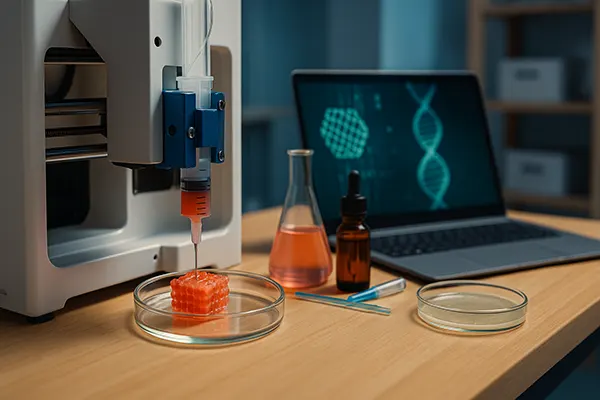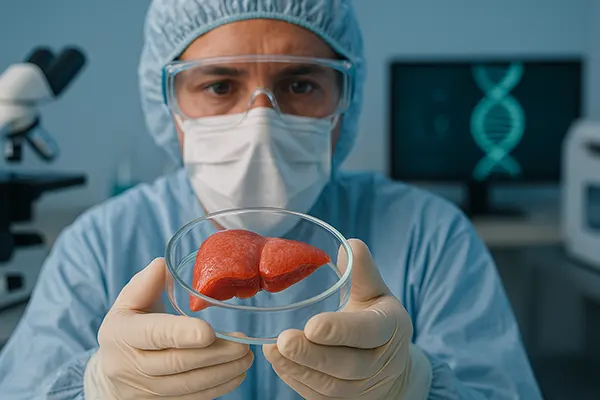‘Lab-less’ Biotechnology: The Rise of Home Bioprinters and Synthetic Materials

In recent years, biotechnology has moved far beyond the walls of research institutes and pharmaceutical laboratories. The rise of compact, affordable bioprinters and the growing accessibility of synthetic materials have opened a new chapter in scientific innovation — one where experimentation and biological design can take place even at home. This movement, often called “lab-less biotechnology,” is redefining how we think about biology, manufacturing, and creativity.
The Emergence of Home Bioprinters
Home bioprinters were once considered an impossible concept, but by 2025, they have become a real and expanding market. These devices use bio-inks composed of living cells and biocompatible gels to print tissues and experimental materials. Early versions were expensive and limited to research, yet newer models are designed for education, personal research, and small-scale production.
Companies like Cellink and Allevi have pioneered desktop-sized printers that can create complex biological structures, from skin samples to microtissues used in cosmetic testing. The ability to experiment safely with simplified biological components allows students, researchers, and bio-enthusiasts to gain hands-on experience without the need for institutional laboratories.
While most home bioprinters remain restricted to non-pathogenic materials for safety reasons, their rapid evolution indicates a clear trend: biotechnology is becoming as accessible as 3D printing was a decade ago. This accessibility is shaping a new generation of innovators who explore biology through creativity rather than traditional academic frameworks.
From 3D Printing to 3D Biofabrication
The transition from 3D printing to 3D biofabrication has been one of the most significant developments in recent biotechnology. Standard 3D printers use plastics or metals, but bioprinters replace these with biological or synthetic biomaterials that can interact with living systems.
Educational institutions now use simplified bioprinters to demonstrate tissue growth, organ modelling, and even synthetic meat production. These systems do not require sterile environments or professional supervision, as they employ stable, safe bio-inks designed for domestic use.
This democratization of biotechnology not only inspires future scientists but also bridges the gap between art, science, and technology. Artists, designers, and engineers collaborate on new projects involving living materials, creating a unique cultural and scientific synergy.
The Growth of Synthetic Biological Materials
Parallel to home bioprinting, the field of synthetic materials has advanced dramatically. Synthetic biology now allows for the creation of bioengineered fabrics, biodegradable plastics, and self-healing materials that mimic living tissue. Companies across Europe and Asia have begun commercialising eco-friendly substitutes for leather, silk, and rubber, driven by sustainability goals.
In 2025, start-ups such as Modern Meadow and MycoWorks are at the forefront of producing synthetic materials derived from fungi and bacterial cellulose. These alternatives reduce industrial waste while maintaining durability and texture similar to traditional materials.
Moreover, the rise of “do-it-yourself biology” communities has led to open-source sharing of material recipes and genetic designs. This has accelerated innovation while raising ethical discussions about intellectual property and biosafety regulations.
Environmental Impact and Sustainability
One of the key benefits of synthetic biology is its potential to address environmental challenges. Conventional manufacturing relies heavily on petrochemicals and generates significant waste, whereas biotechnological processes often use renewable resources and produce biodegradable outputs.
By 2025, the European Union and several Asian nations have introduced regulatory frameworks promoting bio-based innovation, encouraging start-ups to replace harmful materials with biocompatible alternatives. As a result, many household products — from packaging to clothing — now incorporate engineered biofibres.
However, the sustainability of bioprinting also depends on responsible sourcing of biomaterials and energy efficiency in production. The challenge lies in balancing accessibility with ethical oversight, ensuring that biotechnology serves both progress and ecological preservation.

Ethics, Accessibility, and the Future of DIY Biotech
The growth of lab-less biotechnology brings both excitement and responsibility. With access to living systems at home, enthusiasts must follow safety guidelines and respect bioethical standards. Governments and organisations such as the DIYBio Global Network are working to create safe frameworks for citizen science.
Educational programmes are increasingly integrating biotechnology courses into secondary and university curriculums, preparing future innovators for a world where biology and technology are deeply interconnected. Open collaboration between academia and the public ensures that progress remains transparent and beneficial.
By 2025, community laboratories and online workshops are expanding rapidly, offering mentorship, resources, and certified training for bio-enthusiasts. This hybrid model — combining accessibility and accountability — defines the future of home-based science.
The Next Step: Personalised Biomanufacturing
Looking ahead, experts predict that bioprinters will evolve into personal biofactories capable of producing customised medicines, prosthetics, and even food components. While these technologies are still in early development, they hold the potential to transform healthcare, sustainability, and self-sufficiency.
Research in biofabrication is now supported by artificial intelligence, which optimises printing processes and predicts material behaviour. This integration allows users to design biological structures with precision previously seen only in industrial labs.
Ultimately, “lab-less” biotechnology symbolises a shift in human creativity — a movement from observation to participation. As bioprinters and synthetic materials continue to evolve, the line between science and everyday life becomes ever thinner, opening a future where biology truly belongs to everyone.
